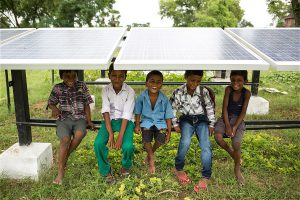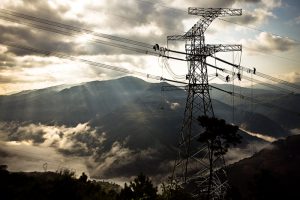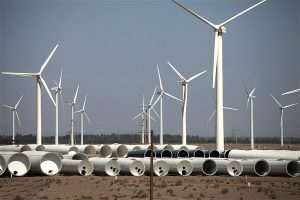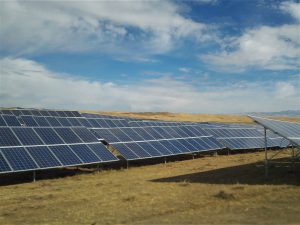China’s state-planned power system is in for a shock as the government is planning to change the way it subsidises renewable energy and introduce a quota that nudges electricity companies to invest in renewables.
In the first stage, electricity generators and retailers will be required to buy green electricity certificates (tradable certificates which prove that electricity has been generated through renewable energy sources) from July 1.
This is a significant departure from the current subsidy system, whereby the government pays generators a premium for renewable energy, and which will be gradually phased out.
In a proposed further stage – which is still open to consultation and has not been confirmed – electricity generators will be expected to increase the share of renewables in their portfolios to 15% by 2020 or be forced to make up the shortfall by buying green electricity certificates.
Unsustainable subsidies
Energy from wind and solar sources is still more expensive than coal-fired power in China, but the price paid by the grid is the same regardless of where the power comes from. To encourage investment in renewables, the state has so far supported energy firms by directly subsidising the price paid by the grid – that is, the extra cost of buying renewable electricity as compared to coal-fired power.
But the subsidy system isn’t working very well. Payments are slow to arrive, making it difficult for energy companies to recoup their investments. Meanwhile, the rapid expansion of renewables has increased the financial burden on the state. By the latter half of 2016, 55 billion yuan (US$8 billion) in subsidy payments was still outstanding.
This is where green certificates come in. The new system is designed to reduce the financial burden on government by phasing out direct subsidies for renewables and shifting the cost onto companies trading certificates.
This will help renewable electricity firms see a quicker return on investment because electronic certificates will be awarded to generators (excluding hydro) as soon as power is delivered to the grid.
In February, the National Development and Reform Commission (NRDC), the Ministry of Finance, and the National Energy Authority (NEA) issued a document on the issuing and voluntary purchase of these certificates, telling wind and solar power generators (excluding distributed solar) that they could start the application process to receive certificates.
Renewable electricity standard
The government also wants to fix another problem facing the renewables sector. Unlike countries such as Germany that prioritise grid connections for renewables, there is no such requirement in China. One result of this is curtailments, for energy is wasted for failure to connect to the grid.
In 2016, 17% of wind power generation was wasted, with curtailment levels reaching 43% and 38% in Gansu and Xinjiang provinces, respectively. Wastage of wind and solar power has remained high and is the main obstacle holding back the country’s renewables sector.
The new system of green electricity certificates seeks to address this problem by introducing a portfolio standard, or quota. This means electricity generators and distributors must source a certain proportion of their electricity production from renewables.
In April 2016, the NEA held a public consultation on the quota proposal, saying that by 2020 thermal power firms would be required to source 15% of their generation from non-hydro renewable sources. Those firms that cannot meet the 15% quota for renewable electricity in their own generation mix will be obliged to purchase green electricity certificates.
The portfolio standard would provide a straightforward mechanism to help China meet its existing climate commitments, in particular the goal to increase non-fossil sources of energy, including hydro and nuclear, to 15% of all primary energy consumption by 2020.
Energy experts estimate that China could hit the 15% target if existing coal-fired power generators increase non-fossil sources as a share of their generation to 14.4% – basically the same percentage set by the quota.
Lin Boqiang, dean of the China Institute for Energy Policy Studies at Xiamen University, pointed out that “with an overall surplus of electricity, a quota is the real solution to wastage of wind and solar power, and the trading of green electricity certificates will make the quota system flexible and reduce the costs of compulsory quotas.”
The NEA also revealed that in 2018 the government is likely to implement quota audits and compulsory certificate trading, though this is not yet official.
Green electricity certificates will have no real impact on China’s energy structure unless accompanied by a quota system
The coal conundrum
In China, thermal power is dominated by the coal sector, so forcing generators to increases non-hydro renewables to 15% of their electricity production will not be easy.
The coal sector is facing major challenges so opposition to efforts forcing already struggling firms to pay for green electricity certificates is expected.
Surplus capacity has already resulted in falling profits and paralysis in the coal sector. Furthermore, efforts to reduce coal output resulted in a rise in coal prices from the latter half of 2016, with increases accelerating this year. In response, seven coal power generating firms in Ningxia, northern China, a major producer of coal-fired power, penned a joint letter to the provincial authorities calling for prices to be lowered.
Another problem is captive coal-fired power plants. These are facilities that companies build as a source of cheap power and which are not connected to the grid and do not sell power. This lack of grid transparency makes it hard for regulators to take them into account when enforcing a green electricity quota system. It is currently unknown how much power these facilities generate.
It is also unclear whether these new rules will come into force as scheduled in 2018. But regardless of how coal power’s problems are resolved, green electricity certificates will have no real impact on China’s energy structure unless accompanied by a quota system.
Prospects for green electricity certificates
In the short term, it is hoped that a quota system will ensure the success of green certificates by encouraging all generators to develop renewables and to reduce wastage of existing renewables.
However, in the medium to long term green carbon trading and electricity market reforms will be key to the sustainability of the certificate system.
Li Peng, head of the new and renewable energy department at the NEA explained that green energy certificates could easily be traded on carbon markets. However, as renewable electricity has no direct carbon emissions further regulation will be required to clarify ownership of the carbon emission rights implied by the certificates.
China’s national carbon market is set to launch this year and will overtake the EU Emission Trading System as the world’s largest. The electricity sector is one of eight sectorsthat will participate.
The speed of electricity market reforms will also be decisive in the development of the certificate system. Currently the government sets the price at which electricity is sold to the grid – the cost of generation and market demand is, therefore, not a factor, regardless of whether you are buying coal power or solar.
This prevents changes in generation costs being passed on to consumers, so neither the rapid fluctuations in costs of coal power, or the steady decrease in the cost of renewables are fully reflected in electricity prices.
The aim of the electricity reforms that China launched in 2015 was to introduce a market between electricity generators and retailers, replacing the planned generation of power and price-setting. If the reforms are successful then renewable sources of energy will be able to compete with coal-fired power on a more level playing field.
This will make renewables more competitive by removing the priority of coal power over renewables in generation, and with the removal of price-setting, the rapid cost reductions associated with renewables development will be better reflected in electricity prices.
According to Li Boqiang coal will remain competitive for some time, as it is cheaper. But China is seeing the costs of wind and solar technology drop rapidly, particularly in the case of solar PV solar. Between 2011 and 2016 the cost of PV solar components dropped 70%.
According to Li Peng, if market reforms are well-implemented then prices will be more stable in the medium to long term and give renewables a competitive advantage. The sale of green certificates and carbon trading will further expand their environmental advantages over fossil fuels.








